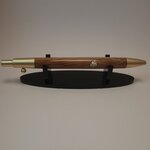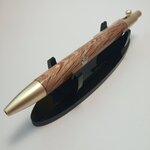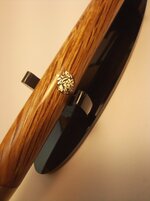MedWoodWorx
Member
I encountered a worm hole when making this pen and since it was too big to cover i decided to highlight. The result is this childish attempt to fill it with ca and silver chips. Its not great but its not bad either. Anyway next time i ll try stacking the chips somehow in the hole and maybe using black ca for more contrast. Also silver needs buffing before coating with ca. Cheers



